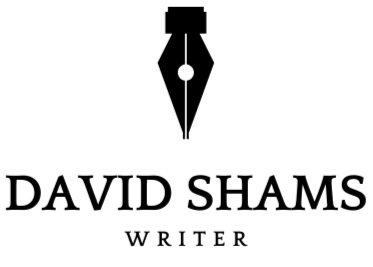A Single Football Match, Barely a Salve
Christian Pulisic finishes off a cross in the 38th minute against Iran. USMNT wins 1-0. Photo Credit: Fabrizio Bensch—Getty Images.
A few minutes before kick-off, surrounded by a growing crowd of US fans, I checked my heart rate. It was racing. The pint I had downed in the previous half hour had done nothing to ease my anxiety. My apple watch read 140 bpm. That’s usually what I reach in the middle of an intense workout. (My resting heart rate normally floats around 60 bpm).
I took a few deep breaths, hoping, but ultimately failing to slow my rapidly beating heart.
Around me, conversations continued unabated. Men from older generations, who grew up never imagining a moment when the US could be at this level, with their lifelong friends wearing some variation of US jerseys from years past discussing what might or might not happen. They were confident of a win by the US over Iran and oozed adolescent certitude.
I sat quietly in the middle of a local brewery’s beer hall. Food had been consumed, feverishly chomped and chewed after I had forgotten to eat anything earlier other than a cliff bar washed down by three doppio espressos. Folks were milling about, ordering their coffee stouts and amber lagers, all perfectly poured and expertly delivered.
I know what you’re thinking, ‘David, that’s why your heart rate was high. Three doppio espressos, bro.’ Sorry, you’re wrong. That’s not it at all.
My morning was purposely jam-packed with things to do. Drop my daughter off at school. Haircut in Georgetown. Walk to Sharbat. Order some baklava for my wife’s cookie exchange at the weekend. Uber home. Change and then head directly to the brewery. I didn’t want my morning filled with nervous energy as I waited for the match to start. That included bypassing the 10am games.
But I sat there, nerves shot well before a ball had even been kicked for warm-ups. Staring up at the brewery’s ceiling, exposed ductwork, and unique lighting from what looked like an oversized barrel.
When the draw was made in April, I had wanted this match to not determine either teams’ future in Qatar–either moving on or going home. It was aspirational. And as aspirations often go, I was disappointed.
It was clear even seven months ago that the narratives surrounding the match would be the same cliche storylines from 1998, when the two teams first met on the world stage. Journalists were definitely going to use phrases like ‘geopolitical tension,’ ‘since the revolution,’ ‘fraught relationship,’ or some other variation. Pundits with little nuance or appreciation for history would settle for the easy and the trite. Jingoism would be favored over thoughtful analysis.
I knew the Iranian-American community would be overlooked. Folks with microphones unmoved by the exigencies of their job and in an effort to not overcomplicate things, would not engage. This despite the situation being complicated and requiring layers upon layers of context.
Adding to the complexity, just two months prior to the match, a spark ignited a bigger conflagration inside Iran. Protests for greater freedoms and a more responsive government began after Mahsa Jina Amini, a Kurdish-Iranian woman, was killed by Iran’s infamous morality police. And for the first time in the 43-year history of the regime, there is a real challenge to the Iranian clerical-led system.
The Iranian national team was caught up in these protests as it was preparing to compete on the world stage. Foisted on them was a desire among many Iranians both inside and outside Iran to hear them speak out. Some players did, others didn’t. They were obliged to meet with the reviled President of Iran, Ebrahim Raisi, before going to Qatar and in doing so convinced many that they were, in fact, the regime’s team. No longer was Team Melli seen as the one unifying factor between the diaspora and those still inside Iran. We know now that the players were under tremendous pressure from Iranian intelligence services–who threatened their loved ones–to not speak out.
Adding yet another layer was US Soccer’s decision to inject itself into the conversation by posting graphics altering the Iranian flag so that visible Islamic references were removed. It was a hamfisted decision that centered US Soccer rather than the protestors, as the media spent seventy-two hours breathlessly focusing on the flag kerfuffle instead of the turmoil inside Iran or the match itself.
That was the context I carried with me when I walked into the brewery Tuesday afternoon, stomach grumbling, nerves shot, my soul being ripped in two.
If I am being honest, I just wanted it to be over. The match was at best a momentary salve, a reminder that whatever baggage I thought it could help carry, it would, in fact, only carry it so far, if at all. And in the aftermath, I would be forced, like many of my fellow hyphenated Iranians, to come to grips with the realities we face–a raging homeland and a diaspora at each other’s throats, fighting over who is best suited to lead the moment.
As the final whistle blew, signaling an end to Iran’s appearance in Qatar, letting us know that the United States would move on to face the Tangerine Dream, I breathed a much-needed sigh of relief. It was over. My heart rate normalized. The bar patrons slowly left.
I walked home as much to burn off some of the beer I had nervously consumed and to clear my head of all the anxiety as it was to come down from the culmination of a moment I thought would be more hopeful, but was ultimately only a reminder that the conflicted emotions raging inside me and in much of the diaspora could not be resolved by a single football match.
The silver lining is that, for at least the next few days at least, I’ll get to cheer for the United States and our emerging golden generation. Iran and its torments will have to wait.


